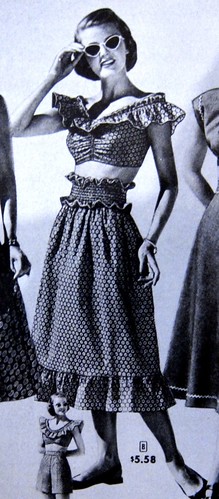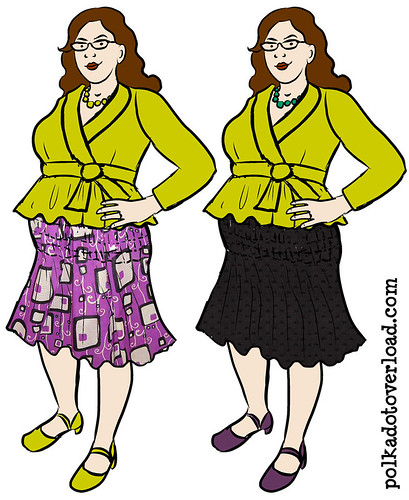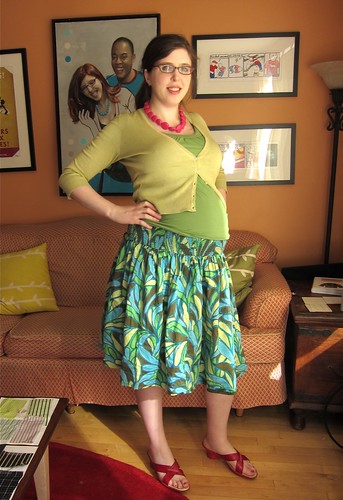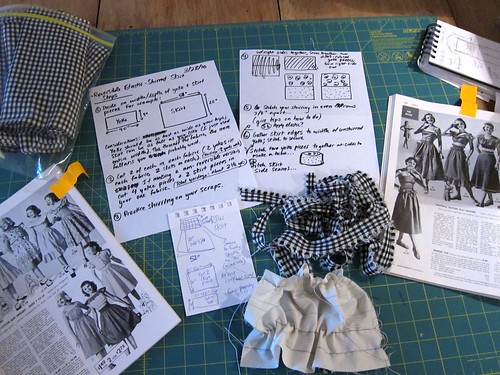
Shirred Skirt Fabulousness from the 1949 Sears Catalog
In between muslining my Sencha blouse, schmoozing over falafel with the fabulous Bloggers and Blogettes (more on this later!), fighting off a nasty cold and decluttering the apartment for Cartoonist Baby, I've been working out the pattern-free pattern for my reversible shirred-waist full skirt:

This skirt is the foundation of my spring mini-wardrobe contest plans--like the no-elastic yoked knit skirts I've been making, it should be stretchy enough to accommodate the most pregnant of bellies, but will still work just fine post-maternity.
But, horrors! As you recall I hit a roadblock recently when I discovered that my purchased Burda shirred-yoke skirt pattern was a circle skirt that just Would Not Do with my vertically patterned purple cotton lawn.
What I really needed was a pattern for a full skirt, like this 1950s number:

Or like this RTW reversible Gap skirt (the reverse side is a solid). It's not a maternity skirt at all, it fit me just fine before I gained 30 pounds of belly, bustage and baby, AND it is still quite comfortable in my third trimester!

Except no pattern is really needed at all for a dirndl/full skirt--as Gertie revealed in her tutorial on a non-elastic version, it's just a bunch of gathered rectangles. All you do is choose how full/gathered you want the skirt to be in relation to your hips (two times? three times?), "draft" a waistband piece, gather, cut and sew.
Construction is a bit different for a reversible elastic-shirred version with a deep yoke instead of a waistband, of course. And I've never shirred a stitch before in my life. So here's a peek at the Mikhaela test lab:

As you can see I've worked out some measurements and a likely construction sequence and cut out my (wearable) test garment pieces in a small-scale gingham ($1.50 a yard from Fulton Fabrics!). Right now I'm playing with different elastic shirring techniques on some muslin--none of my sewing reference books are very detailed on the subject, and online tutorials and advice differ widely on ideal stitch length/tension and how tightly the elastic should be wound on the bobbin.
I don't know yet if the test tube version of my shirred skirt will be a success, but once I achieve World Shirring Domination I promise not to take it too far:

(Crossposted to my blog, Polka Dot Overload).
